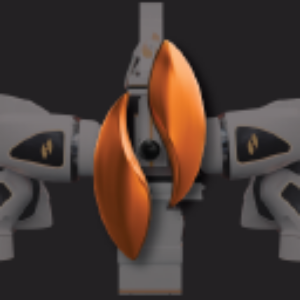Welcome to our dedicated page for Stereotaxis Ord news (Ticker: STXS), a resource for investors and traders seeking the latest updates and insights on Stereotaxis Ord stock.
Stereotaxis Ord (STXS) delivers pioneering robotic solutions for cardiac arrhythmia treatment and complex vascular procedures. This page serves as the definitive source for official company news, providing investors and healthcare professionals with timely updates on innovations shaping the future of interventional medicine.
Access curated press releases and announcements covering regulatory milestones, product launches, and strategic partnerships. Our repository ensures you stay informed about developments in robotic navigation systems and integrated healthcare technologies without speculative commentary.
Key updates include earnings reports, FDA clearances, clinical trial outcomes, and technological advancements in electrophysiology. Bookmark this page for direct access to Stereotaxis' verified communications, enabling informed analysis of their market position in medical robotics sector.
Stereotaxis (NYSE: STXS), a pioneer in surgical robotics, reported its Q2 2025 financial results with significant growth. Total revenue reached $8.8 million, up 95% year-over-year and 18% sequentially. System revenue was $3.0 million, while recurring revenue grew 35% to $5.8 million.
The company achieved a notable milestone with FDA clearance of MAGiC Sweep, its first interventional catheter approval in nearly 20 years. Gross margin was 52%, with recurring revenue margin at 68% and system margin at 22%. The quarter ended with $7.0 million in cash, subsequently strengthened by a $12.5 million strategic financing in July.
Management reiterated expectations of double-digit revenue growth for 2025, projecting $2-3 million quarterly system revenue and recurring revenue scaling to $7 million by Q4 2025.
Stereotaxis (NYSE:STXS), a pioneer in surgical robotics, has received FDA 510(k) clearance for its MAGiC Sweep™ catheter, the world's first robotically navigated high-density electrophysiology mapping catheter. The innovative device features 20 electrodes for detailed cardiac mapping and integrates with Stereotaxis' Robotic Systems.
The MAGiC Sweep catheter offers significant advantages including efficient high-density mapping, extended reach and precision, atraumatic design, and improved anatomical accuracy. This marks Stereotaxis' first FDA clearance for an interventional catheter in nearly 20 years and represents a crucial milestone in the company's comprehensive innovation strategy for advancing robotics in electrophysiology.
Stereotaxis (NYSE: STXS), a pioneer in surgical robotics for minimally invasive endovascular intervention, will release its Q2 2025 financial results on August 7, 2025 after market close. The company will host a conference call and webcast at 4:30 p.m. ET to discuss results and corporate developments.
Stereotaxis' technology has been utilized in treating over 150,000 patients globally across the United States, Europe, Asia, and other regions. The company specializes in developing robotic systems, instruments, and information solutions for interventional laboratories, focusing on enhancing physician care delivery with robotic precision and safety.
Stereotaxis (NYSE: STXS), a pioneer in surgical robotics for minimally invasive endovascular intervention, has announced a $12.5 million registered direct offering of common stock at $2.00 per share. The offering is led by a strategic industry partner and select institutional investors.
The financing will be completed in two closings: an initial $8.5 million closing around July 18, 2025, and a second $4.0 million closing by November 25, 2025. Lake Street Capital Markets LLC serves as the exclusive placement agent. The proceeds will support product commercialization, research and development, and other corporate purposes.
Stereotaxis technology has been used to treat over 150,000 patients globally across the United States, Europe, Asia, and other regions.
Stereotaxis (NYSE: STXS), a pioneer in surgical robotics, announced the publication of first clinical results for its MAGiC catheter in the Journal of Interventional Cardiac Electrophysiology. The prospective multi-center study demonstrated an impressive 94% acute efficacy rate in treating various heart arrhythmias.
The study, conducted at Copenhagen University Hospital Rigshospitalet and Vilnius University Hospital Santaros Klinikos, included 67 patients with various arrhythmias. The average procedure time was 83 minutes skin-to-skin, with a low procedure-related adverse event rate of 1.5%. Patient enrollment continues with approximately 100 patients enrolled to date, with efficacy assessments ongoing for up to one year.
The MAGiC catheter, designed for robotically-navigated magnetic ablation procedures, showed notable improvements in stability, eliminating the need for sheaths for catheter support. The technology has already been utilized in treating over 150,000 patients across leading hospitals globally.
Stereotaxis (NYSE: STXS), a pioneer in surgical robotics for minimally invasive endovascular intervention, has scheduled its first quarter 2025 financial results release for May 12, 2025 after U.S. market close. The company will host a conference call and webcast at 4:30 p.m. EST to discuss results and corporate developments.
Investors can access the live call by dialing 800-715-9871 (US/Canada) or 1-646-307-1963 (International) with pass code 4794777. A webcast will be available through the investor relations section of Stereotaxis' website, with replay access available for one month after the call.
Stereotaxis' technology has been utilized in treating over 150,000 patients globally across the United States, Europe, Asia, and other regions.
Stereotaxis (NYSE: STXS) announced it will showcase the first-ever live demonstration of its GenesisX Robotic System at the Heart Rhythm Symposium (HRS) in San Diego from April 24-27, 2025. The GenesisX system represents a significant advancement in endovascular surgical robotics, featuring a compact design with built-in magnetic shielding and 80% smaller system cabinet that fits under operating room tables.
The system operates on standard power, requires no structural anchoring, and maintains high performance standards. GenesisX received CE Mark approval in Europe in 2024 and is currently under FDA 510(k) review. The company will also display its portfolio of compatible catheters including Map-iT™, MAGiC™, and EMAGIN™, alongside Synchrony™ and SynX™ digital lab technologies.
Stereotaxis (NYSE: STXS), a pioneer in surgical robotics for minimally invasive endovascular intervention, has been highlighted at NVIDIA's GTC artificial intelligence conference and accepted into the NVIDIA Connect program. The conference, attended by over 25,000 participants in San Jose, featured Stereotaxis' surgical robots during NVIDIA's VP of Healthcare and Life Sciences' special address.
Stereotaxis' robotic technologies have been utilized in over 150,000 patient treatments across more than 100 leading hospitals globally. The company is now focusing on digital solutions incorporating artificial intelligence, robotic automation, data integration, and decision support capabilities to enhance its robotic systems and operating room environment.
Through the NVIDIA Connect program membership, Stereotaxis gains access to NVIDIA's software development resources, frameworks, and development kits to support its technological advancement initiatives.
Stereotaxis (NYSE: STXS), a pioneer in surgical robotics for minimally invasive endovascular intervention, announced its participation in the 37th Annual ROTH Conference in Dana Point, California. Chairman and CEO David Fischel will be available for one-on-one meetings on March 17th, 2025.
The company's innovative technology has been utilized to treat over 150,000 patients globally across the United States, Europe, Asia, and other regions. Stereotaxis specializes in developing robotic systems, instruments, and information solutions for the interventional laboratory, focusing on enhancing physician capabilities through robotic precision and safety, while expanding access to minimally invasive therapy and improving operating room productivity and connectivity.


